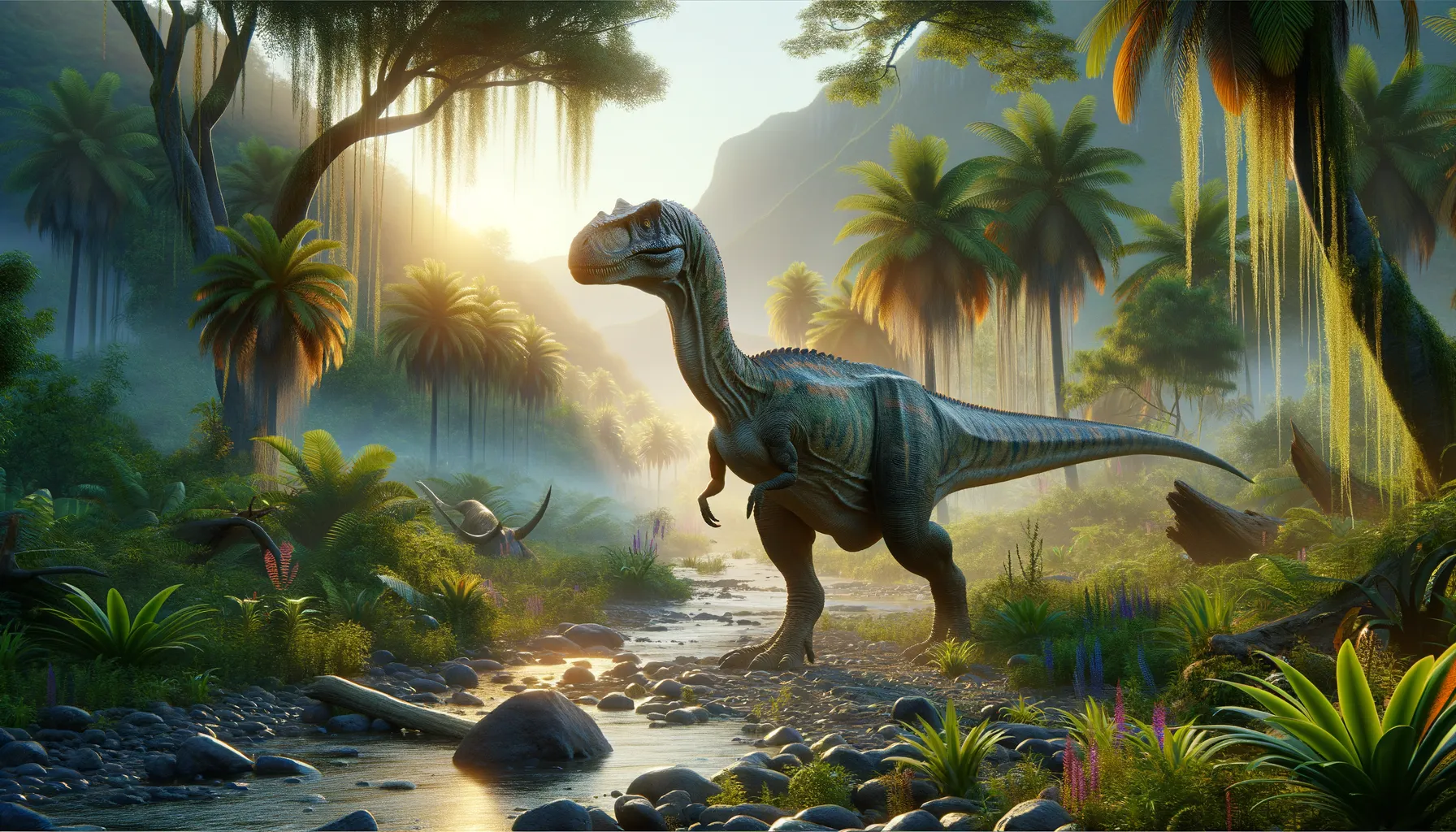
Yandusaurus
A Jurassic leaf-eater on two agile legs!
Period
Jurassic
Length
Around 4 meters long from head to tail.
Height
Stood around 1 meter tall at the hips.
Weight
Approximately 120-150 kilograms.
Yandusaurus was a small to medium-sized herbivorous dinosaur that roamed the Earth during the Jurassic period. Known for its bipedal locomotion, it was well-adapted to living in lush environments where it could feed on a variety of plant life. Its discovery in the Sichuan region of China has provided valuable insights into the diversity of early ornithopods.
Diet
Yandusaurus was primarily a herbivore, feeding on a variety of plants. Its teeth were well-suited for grinding tough vegetation, which was abundant during the Jurassic period.
Hunting
Being a herbivore, Yandusaurus did not hunt other animals but instead foraged for plants. It likely moved in small groups, which allowed it to better locate food and watch for predators.
Environmental challenges
Yandusaurus faced environmental challenges such as predation from larger theropod dinosaurs. It also had to deal with fluctuations in food availability due to changes in climate. These challenges required it to develop features like keen senses and quick feet to survive in its habitat.
Speed
Moderate, suitable for escaping predators.
Lifespan
Estimated around 20-30 years.
First discovery
Discovered in 1973 in China.
Fun Facts
- Yandusaurus was a small herbivorous dinosaur that lived during the Middle Jurassic period around 165 million years ago.
- It was discovered in the Sichuan Province of China in the 1970s, with its name meaning 'Yandu lizard' after the region it was found.
- Despite its small size, Yandusaurus had strong legs and could likely run quickly to escape predators.
- This dinosaur is known for its unique, bird-like pelvic structure, which hints at the evolutionary link between dinosaurs and birds.
- Yandusaurus had a long tail which helped it balance while running on its hind legs.
- It had leaf-shaped teeth perfect for slicing through plant material, indicating its herbivorous diet.
- The remains of Yandusaurus provided valuable insights into the plant-eating dinosaurs that roamed Asia during the Jurassic period.
Growth and Development
Yandusaurus likely experienced relatively rapid growth after hatching to avoid predation. As one of the lesser-known ornithopods, its development might have resembled that of similar-sized dinosaurs, transitioning from quadrupedal to bipedal as it matured. The growth rate would have allowed it to quickly reach sizes where it could better defend itself.
Habitat
Yandusaurus inhabited the lush, forested regions of what is now China. These areas were rich in plant life, providing ample food resources. The environment was likely warm and humid, contributing to a diverse ecosystem including other herbivores and predators.
Interaction with other species
Yandusaurus coexisted with a variety of other dinosaurs, both herbivorous and carnivorous. It likely formed herds to increase survival chances against predators. Interaction with other species was mostly competitive, especially in terms of food and territory.
Natural lifespan
Its natural lifespan was around 20-30 years.
Reproduction
Yandusaurus reproduced by laying eggs, like most dinosaurs. Nesting sites were likely chosen for safety and proximity to food sources. Hatchlings would have been vulnerable, requiring rapid growth and developmental changes for survival.
Social behaviour
Social behavior in Yandusaurus might have included herd formation for protection. Group living would have enhanced vigilance against predators and aided in the sharing of information about food sources. There is limited evidence of complex social interactions.
Fossil locations
Fossil evidence of Yandusaurus comes primarily from the Sichuan Basin in China. These fossil sites provide a snapshot of its presence and help elucidate the paleoenvironments it lived in. The relatively few sites reflect its distribution during the Jurassic period.
